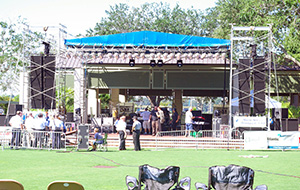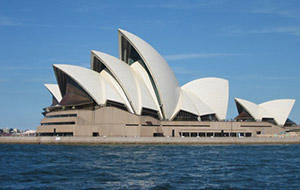 This year’s Genée International Ballet Competition, presented by the Royal Academy of Dance, is to be held in Sydney, Australia in December. As the country’s summer time, December will see competition candidates from all over the world – but it is thought predominantly from Australia – journey to the city in order to compete for the prize money and exposure offered by the competition. Previous winners and medallists of the competition have gone on to dance with and choreograph for the world’s best dance companies, so taking part in the competition is worthwhile indeed.
This year’s Genée International Ballet Competition, presented by the Royal Academy of Dance, is to be held in Sydney, Australia in December. As the country’s summer time, December will see competition candidates from all over the world – but it is thought predominantly from Australia – journey to the city in order to compete for the prize money and exposure offered by the competition. Previous winners and medallists of the competition have gone on to dance with and choreograph for the world’s best dance companies, so taking part in the competition is worthwhile indeed.
Recently announced for the competition is that Steven McRae, principal at the Royal Ballet, is an ambassador for the Genée this year. McRae himself competed when the competition was last held in Sydney in 2002, scooping the gold medal as an Australian native. Today he is tearing up the stage in a variety of classical and modern repertoire with the Royal Ballet, even as a tap dancing rabbit in an Alice in Wonderland interpretation. Whilst there has been many notable recipients of the Genée medals, there is a significant number of Australians within this. The Royal Academy of Dance’s Genée Alumni scheme works to reconnect with all past candidates and celebrate their various successes.
The competition is made up of 10 days activity, the majority of which is coaching for the candidates, culminating in the Final at the Sydney Opera House. Three days of Semi-finals ahead of this at the Concourse will whittle down the candidates to just 12 young aspiring dancers, focused solely on winning the final. With judges including the artistic directors of Australian Ballet, Royal New Zealand Ballet and the Royal Ballet, the candidates will be put through their paces both technically and artistically. They will dance both a classical variation and a piece of their own, in addition to learning commissioned choreography.
Category: News
The new bbodance
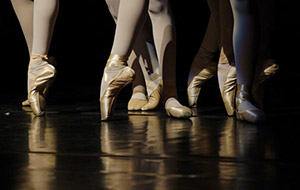 bbodance, formerly known as the British Ballet Organisation, recently announced the appointment of Michael Nunn OBE, William Trevitt OBE and Kerry Whelan as the new Co-Artistic Director consultants. Nunn, Trevitt and Whelan, the team behind internationally renowned dance company BalletBoyz will join bbodance to provide artistic direction, help grow its membership and introduce innovative and exciting projects.
bbodance, formerly known as the British Ballet Organisation, recently announced the appointment of Michael Nunn OBE, William Trevitt OBE and Kerry Whelan as the new Co-Artistic Director consultants. Nunn, Trevitt and Whelan, the team behind internationally renowned dance company BalletBoyz will join bbodance to provide artistic direction, help grow its membership and introduce innovative and exciting projects.
The long history of the British Ballet Organisation has a rich heritage and legacy, and the trio aim to continue this in their taking up of the artistic reins. The change and rebrand is a significant shift for the organisation, including a move to new premises and a major overhaul of the teaching syllabi. To this end, the values pursued at BalletBoyz, namely excellence, quality and the shared enjoyment of dance, will continue through the new bbodance.
Over nearly 90 years, the organisation has built a rich history into its brand. This 2016 change is part of bbodance’s commitment to improving its services, events and membership benefits across the dance services provided by the organisation. As part of bbodance’s commitment to innovation it also announced the launch of a new musical theatre dance syllabus in 2016, a welcome addition to its sole focus on ballet.
The foundations for a modernised bbodance are now in place with new visions from the award winning Artistic Directors. Their expertise will provide a secure platform to inspire and promote excellence in dance training while retaining the bbodance traditional values. Additionally, the new London headquarters includes studios, a library and classrooms to provide the space to hold bbodance teacher training programme on-site, a base for all future syllabus development and a home for all bbodance members. It is hoped that this will create a lasting legacy for future generations of ballet dancers and teachers.
Rambert floor South Africa bound
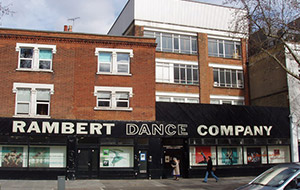 Dane Hurst, of Rambert dance company, left his native South Africa 13 years ago headed for the UK. He recently returned in order to begin the process of sharing dance with other young people who want to escape the streets, bringing a dance floor over from London by ship. The floor is the former rehearsal floor of Rambert, sold when the dance company moved from Chiswick to its new home on London’s South Bank.
Dane Hurst, of Rambert dance company, left his native South Africa 13 years ago headed for the UK. He recently returned in order to begin the process of sharing dance with other young people who want to escape the streets, bringing a dance floor over from London by ship. The floor is the former rehearsal floor of Rambert, sold when the dance company moved from Chiswick to its new home on London’s South Bank.
Dane learned all the pieces he has danced for Rambert on the floor; being reinforced vinyl it will soften the young South Africans’ landings as a shock absorber, protecting joints and withstanding friction and heat. After he bought the floor, Dane won best male dancer at the Critics’ Circle Awards in 2014. He used the ceremony to announce his dream to use dance to empower young people in his homeland, and asked for help inspiring young children to dance as he once was. He approached an architect to design a dance centre made out of shipping containers, for when there are funds to build it, to then house the floor.
As a child dance was a release for Dane, discovering ballet because his grandmother made costumes at the local dance school, during the time of apartheid. Eventually Dane escaped and was able to dance in London with a scholarship, training at the Rambert School of Ballet and Contemporary Dance. Now aged 32 it is time for Dane to leave his wild dream of being a dancer, in order to pursue a new dream. Dane has established an organisation called the Moving Assembly Project and launched a pilot project: two weeks of workshops at a health and education centre. Another ex-Rambert dancer, Estela Merlos, also journeyed to Africa to help Dane teach, giving the children a way to survive.
Dance plans for east London
 There are plans in the pipeline to make London the capital of dance in the world, with the aim to rejuvenate the arts – specifically dance – in east London. Plans to create a new dance hub in east London have been announced recently, and by 2021 the area will see 16 new dance studios, two production studios, a 600-seat dance theatre, a hip hop academy, a ballet school and a choreographic school, all within a few miles of Stratford.
There are plans in the pipeline to make London the capital of dance in the world, with the aim to rejuvenate the arts – specifically dance – in east London. Plans to create a new dance hub in east London have been announced recently, and by 2021 the area will see 16 new dance studios, two production studios, a 600-seat dance theatre, a hip hop academy, a ballet school and a choreographic school, all within a few miles of Stratford.
The plans are the result of Sadler’s Wells, English National Ballet and Studio Wayne McGregor moving to the area, three major dance organisations that will all work with local dance agency East London Dance to achieve these aims. Multi-award-winning choreographer Wayne McGregor has already moved east. Coincidentally, his career began running community dance groups in Redbridge in the 1990s, to return to the area is going full circle. For Studio Wayne McGregor, the plan is to offer free rehearsal space to 25 artists each year, and in return the artists will offer workshops or performances in the local community.
The plans to move will also go some way in integrating dance into other places in the community it will be inhabiting. The Olympic Park will see Sadler’s Wells add to its current Angel and Holborn theatres in the capital, in order to house dance performances that don’t currently have a home in London. As well as bringing in international artists, there will be a big focus on nurturing home-grown talent, with a new hip hop academy, an extension of the annual Breakin’ Convention festival, which will let hip hop artists study to conservatoire level, and then in a choreographic school.
English National Ballet is too travelling, setting up home in the new London City Island development, the opposite end of the city to its long-time home in South Kensington. By 2018 the building will be the new home of both the company and the English National Ballet School, providing more studios and a full-size production space – the first of its kind in the city – as well as a rehab centre for the dancers. The aim is for the public to see the creative process in open rehearsals, and to set up a big screen outside for performances within the community.
Full programme for FRAME Festival
 FRAME, the London dance film festival, recently announced its full programme. Presented by BalletBoyz in association with Dancescreen, the programme of film screenings, performances, free public events, family activities and workshops looks set to delight audiences at the first ever festival. A Gene Kelly retrospective including dance films from across the decades will also feature, in addition to industry talks with leading filmmakers, broadcasters and choreographers.
FRAME, the London dance film festival, recently announced its full programme. Presented by BalletBoyz in association with Dancescreen, the programme of film screenings, performances, free public events, family activities and workshops looks set to delight audiences at the first ever festival. A Gene Kelly retrospective including dance films from across the decades will also feature, in addition to industry talks with leading filmmakers, broadcasters and choreographers.
The vast programme will take place from 9-12 June in Kingston-upon-Thames, London. The festival is set to offer a unique opportunity to enjoy the best creative talent in dance and film to the general public, as well engaging broadcasters, video artists and choreographers. Over three days, there will be over 122 films screened with 11 World Premieres, 8 International, 4 European and 28 UK Premieres amongst the new work. These will be classic films for all ages led by a celebration of Gene Kelly, dance performances and outdoor and family activities too.
In terms of film screenings, the contribution of British filmmaking to musicals over the last 40 years includes presenting FAME (1980), STREETDANCE (2010), HAPPY FEET (2006) and DESERT DANCER (2014). FRAME will then pay tribute to the Golden Age of Hollywood with a celebration of one of its greatest dance stars, Gene Kelly. SINGIN’ IN THE RAIN (1952) will be screened alongside the rarely seen INVITATION TO THE DANCE (1956), and THAT’S ENTERTAINMENT! (1974), a compilation of moments from MGM musicals featuring Kelly, Fred Astaire and Liza Minnelli.
FRAME has created a wide-ranging series of talks and activities to complement the screenings, designed to stimulate interest and insight into the diverse ways in which dance can be presented on film. Focused on specifically are dance for camera, filming music videos and Big Dance Shorts, showcasing exciting collaborations in choreography and directing.
All screenings will take place at Rose Theatre, Odeon Cinema, Bentall’s Store and Wow Café. The dancescreen competition winners will be announced at the closing night award ceremony on 12 June, followed by a special live performance by BalletBoyz.
Boston Ballet and William Forsythe
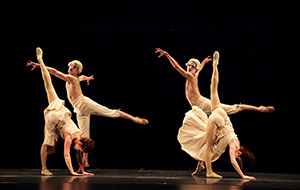 Boston Ballet recently announced a five-year partnership with the iconic choreographer William Forsythe, with an agreement to add one of his works to its repertoire each year, as well as performing four of his ballets already in the company repertory. This coup for the American company will see Forsythe work closely with the dancers, now he no longer runs his own company. The first work to be acquired is Forsythe’s Artifact, which will be performed in spring next year at the Boston Opera House.
Boston Ballet recently announced a five-year partnership with the iconic choreographer William Forsythe, with an agreement to add one of his works to its repertoire each year, as well as performing four of his ballets already in the company repertory. This coup for the American company will see Forsythe work closely with the dancers, now he no longer runs his own company. The first work to be acquired is Forsythe’s Artifact, which will be performed in spring next year at the Boston Opera House.
Forsythe is currently the associate choreographer at Paris Opera Ballet, with the aim to leave the position when Benjamin Millepied, the current director of dance, steps down in the summer. Forsythe also holds the position of professor of dance at the University of Southern California Glorya Kaufman School of Dance, spreading his influence far across the dance industry. As a choreographer Forsythe’s work is held in high regard, an important modern artist and a profound voice, in dance across the world.
The partnership may see new work created by Forsythe for the company, providing him with the space to develop new ideas and concepts for the dancers. Whilst the works that will enter the company’s repertory after Artifact are still unknown, it has been suggested that the artistic director of Boston Ballet hopes to acquire pieces that are less well-known to North American audiences.
The opportunity for the classical dancers to work with and experience Forsythe’s choreography is a great one, developing the dancers’ capacity and opening their visions to new works. While Forsythe’s style is currently unknown to the ballet dancers, they will begin workshops with a former member of Forsythe’s company – and currently the director of the dance programme at Harvard – Jill Johnson, so the dancers can get used to his working methods.
Christopher Marney: Artistic Director of Ballet Central
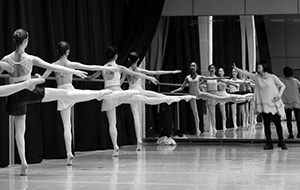 Choreographer and dancer Christopher Marney, perhaps best known for his work as a principal dancer with Matthew Bourne’s New Adventures, was recently announced as the new Artistic Director of Ballet Central. Functioning as the touring company of Central School of Ballet’s third year students, Ballet Central will now be lead by Marney as he ultimately guides them towards industry employment as graduates.
Choreographer and dancer Christopher Marney, perhaps best known for his work as a principal dancer with Matthew Bourne’s New Adventures, was recently announced as the new Artistic Director of Ballet Central. Functioning as the touring company of Central School of Ballet’s third year students, Ballet Central will now be lead by Marney as he ultimately guides them towards industry employment as graduates.
Marney himself is an alumnus of Central School of Ballet, taught by the late founder of the school Christopher Gable. As a great influencer on Marney’s subsequent professional life, this new appointment will see Marney ensure that Gable’s ethos and legacy will live on in future generations of Central students. Marney will take up the post from September, and will continue to undertake freelance work as a performer/choreographer, anticipating the forging of collaborations between Central School of Ballet and industry professionals.
Marney is currently performing in the world tour of Matthew Bourne’s Sleeping Beauty (for which he was also the Associate Choreographer); recent work also includes choreographing for McQueen The Play in London’s West End, and for Ballet Black at the Barbican. Prior to this, Marney’s comprehensive performance career includes work with companies such as BalletBoyz, Michael Clark and Gothenburg Ballet, in addition to receiving Critics Circle nominations at the National Dance Awards.
Following the summer, this creative individual will be shaping the futures of the young artists at Central School of Ballet. Ballet Central will benefit greatly from Marney’s expertise and artistic vision, having already enriched the many companies he has previously been part of. His professionalism, work ethic and unparalleled understanding of theatre and performance will be at the heart of his nurturing of these students as they transition into the competitive dance industry.
Working with the Rockettes
 Mia Michaels, well-known contemporary choreographer, is living it large. Having launched her own company, she has been a three-time Emmy Award winner as a result of her work on “So You Think You Can Dance”, and has also choreographed a hit Broadway musical. Michaels is now set to step it up a gear and is preparing to start work with the legendary Rockettes in New York.
Mia Michaels, well-known contemporary choreographer, is living it large. Having launched her own company, she has been a three-time Emmy Award winner as a result of her work on “So You Think You Can Dance”, and has also choreographed a hit Broadway musical. Michaels is now set to step it up a gear and is preparing to start work with the legendary Rockettes in New York.
Michaels will make her debut as the director and choreographer of the New York Spectacular, starring the Radio City Rockettes, which is a revamped version of last year’s New York Spring Spectacular. She will be working with the company on the new show, gearing up to present it at Radio City Music Hall from 15 June–7 August. Originally Michaels was brought in to choreograph the opening number of the Spring Spectacular, and is now directing the entire show.
Having strived to direct for a long time, Michaels is now getting her chance with this challenging first project. The new show depicts a magical journey through New York City, told through the eyes of a child. Michaels will be introducing a group of male dancers to the mix, for lots of dance work and original music. Whilst the movement will still be typical classic-Rockette, there will also be added contemporary strands to challenge the dancers physically and technically.
The Rockettes have been in existence for more than 85 years, but the challenge of Mia Michaels is a first. Michaels is aspiring to create a New York spectacle – including the inevitable kick lines – in breathing new life into the company. The Rockettes brand is iconic, so pairing it with the work of Michaels really is a recipe for success, retaining the iconic movement with fresh tweaks. Whilst the challenge of directing may be initially overwhelming, the end result is set to be spectacular.
Festivals of dance
Garuda – the new Pilates
 Whilst Pilates has been held in high regard as complementary to dance, there is a new kid on the block. Garuda is complementary to Pilates, and therefore to dance training, using the principles of Pilates but taking the ideology one step further. Many ballet companies and vocational schools employ Pilates as part of dancers’ training, useful for injury prevention, rehabilitation and conditioning: Garuda could now become the popular name.
Whilst Pilates has been held in high regard as complementary to dance, there is a new kid on the block. Garuda is complementary to Pilates, and therefore to dance training, using the principles of Pilates but taking the ideology one step further. Many ballet companies and vocational schools employ Pilates as part of dancers’ training, useful for injury prevention, rehabilitation and conditioning: Garuda could now become the popular name.
Garuda too can be performed on machines or through mat-based exercises, focusing on strength, flexibility, coordination, endurance and increasing range of motion for muscle and joints. The method was developed by James D’Silva, drawing on his experience in training in classical and contemporary dance in the UK before working as a dancer, choreographer and teacher throughout Europe and the USA. From his Indian roots, he went on to open a Pilates studio and develop Garuda as a result of using Pilates, yoga and body conditioning as part of his training routine. Ideas from Gyrotonic, Feldenkrais, Tai Chi and Alexander Technique also developed Garuda, informing his body/mind connection.
The philosophy behind Garuda focuses on breath, rhythm, flow and the idea of relaxation within movement, in order to also strengthen and tone muscles, improve structural fitness and promote a meditative sense of calm. It aims to support the recovering body in finding its athletic form, with the results displaying a stronger, leaner body, improved posture and ease of movement in everyday life. Aside from providing a cardiovascular workout, it also focuses the mind in combining relaxation with exercise.
Garuda incorporates mat-work sequences, barre and a versatile exercise apparatus to contribute to rhythm and flow, promoting a new and improved way to isolate muscle groups. The specialised movements are broken down into motions beneficial for those in dance or undergoing a personalised rehabilitation programme, with a focus on transitions in addition to mindfulness, awareness and introspection. Practitioners constantly work to strengthen the joints, with a focus on alignment and precision of movement. For dancers specifically, it can also be used to understand where to activate for movement, benefit from multi-directional stretch, as well as for stability and strength.

